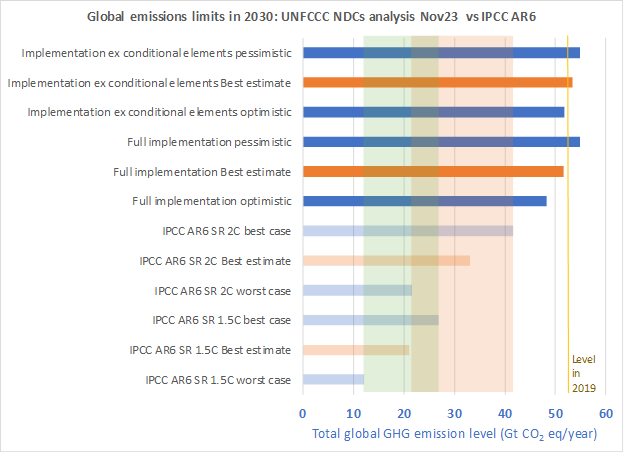Global stocktake: Setting the agenda for COP 28

A final reckoning, the last moment for course correction, an opportunity to bend the curve decisively on emissions and accelerate ambition and accountability. Verco’s Robert Cohen takes a look at the recent UNFCCC report and it’s scientific, objective analysis of global carbon emissions.
A key mechanism of the Paris Agreement is a five-yearly comprehensive global stocktake of progress with mitigation, adaptation and climate finance. The latter covers funding of climate action by developing countries, funding of loss and damage from extreme weather, rising sea level, etc, as well as of the social and economic consequences of climate action, for example on people working in the fossil-fuel industry. Carbon Brief has a detailed primer.
The stocktake is key because it encourages countries to scale up their climate ambitions over time so as to avoid dangerous warming, for example by phasing out fossil fuels, tripling renewable energy capacity and raising climate finance to the trillions that developing countries need. Much of the focus is obviously on signalling to countries what they should submit in their new, enhanced climate plans, aka nationally determined contributions (NDCs). Nations are obliged to submit NDCs every five years and the next round is due in 2025.
UNFCCC’s report shows warming will go well beyond 2.0°C with current commitments
On 14 November, the UNFCCC published a synthesis report analysing the impact of all the NDCs so far submitted. To be precise, 168 communicated by 195 Parties to the Paris Agreement as at 25 September 2023. They cover 95% of the total global emissions in 2019, estimated at 52.6 Gt CO2 eq excluding LULUCF emissions. In terms of GHGs, all NDCs cover CO2 emissions, 91 per cent cover CH4, 89 per cent cover N2O, 54 per cent cover HFCs, 36 per cent cover PFCs and SF6 and 26 per cent cover NF3.
The green and orange areas in the killer graphic below show the limits of where global emissions need to be by 2030 to meet the 1.5 or 2.0°C Paris goals respectively, as calculated by the IPCC AR6 Synthesis Report (SR). The vertical gold line shows the level of emissions in 2019.
The top half of the graph lower three bars show the UNFCCC’s estimates of global emissions in 2030, if there is a full implementation of all NDCs or alternatively, in the top three bars of the graphic, if any conditional elements are excluded. The orange bars represent the best estimates for each analysis, whilst the blue bars show the minimum to maximum uncertainty range. Conditional elements depend on access to enhanced financial resources, technology transfer and technical cooperation and capacity-building support; availability of market-based mechanisms; and absorptive capacity of forests and other ecosystems.
It can be seen that all the emissions estimates extend well beyond the outer limit of the 2.0°C range. UNFCCC estimates with full implementation of NDCs, the best estimate for peak global mean temperature rise is 2.1–2.3 °C. Without implementation of the conditional elements of NDCs, the best estimate of temperature rise is 2.4–2.8 °C warming.

The UNFCCC concludes by saying the analysis indicates the possibility of global emissions peaking before 2030, but only if the conditional elements of the NDCs are implemented. However, the overshoot in the level of absolute emissions by 2030 implied by the latest NDCs compared with the levels necessary to comply with either the 1.5 or 2°C Paris goals is euphemistically labelled as sizeable.
UNFCCC reports specialise in setting out scientific analysis in an objective manner. What lies behind the numbers is both startling yet no surprise to those familiar with the remaining budgets for global carbon emissions. These budgets represent the cumulative carbon emissions which must not be exceeded if humanity is to keep 1.5 alive or even limit warming to below 2°C, as promised in Paris in 2015.
Global emissions in 2030 must be at least 30-45% lower than the 2019 level.
Summary
Whilst reaching net zero emissions by 2050 is crucial for the amount of warming to be experienced by the end of this century, the trajectory to 2050 is also a primary concern. In short, IPCC AR6 modelling shows that global emissions in 2030 must be 43% lower than the 2019 level to keep 1.5 alive (with at least 50% likelihood) and 27% lower to limit warming to 2°C (with at least 67% likelihood). To see clear evidence that global emissions are on track to peak before 2030 does not come close to what needs to be done this decade.
Contact us for further information or to talk to our experts about your net zero journey
